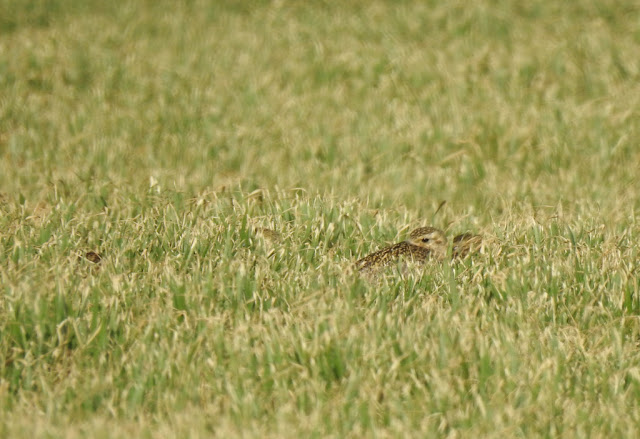A lot of questions this past week or so...
Around 06:20 this morning I popped outside to retrieve the nocmig recorder and noticed a little group of small gulls heading north. Not a regular sight here. I went back in, donned thick coat and bins, and emerged once more. Fifteen minutes later the movement was over, and I was roughly 200 BHGs to the good, plus 30-odd Common Gulls and my second-ever garden Med Gull. Clearly these were birds which had roosted offshore last night, but why this route today? Was it the northerly wind? Or a regular thing that I've simply never noticed before?
This afternoon, another inland circuit. About 6.5 miles, only a small part of it new to me. Highlight was my fourth pair of Marsh Tits this year. Prior to these I had seen only one Marsh Tit locally. A bit of effort and they seem to be popping up all over the place. Just how many local pairs are there? And how close to home?
 |
| Marsh Tit in roadside hedge |
At the end of February I added Golden Plover to my #LocalBigYear list. There were 16 in a sea-level field just behind the beach at East Bexington, exactly the same field which held some last year at this time. When I first discovered them (six on 2 March) I assumed it was a one-off, but no, by the 14th there were 36. Is their reappearance this year just a coincidence? Or is the field perhaps a regular stopping-off point for Golden Plover in late winter?
 |
| Golden Plover x4 - not exactly obtrusive |
 |
| I thought there were nine or ten, then a Sparrowhawk flew past and 16 heads poked up for a look. This shot of most of them was taken shortly after. |
This time two years ago I was a few short weeks away from taking up nocmig recording, a quite unanticipated development. If someone had asked me to predict what species I might get on a regular basis, I can safely say that Moorhen and Coot would not have been on that list. The notion that gangly rails which normally do everything possible to avoid taking wing might be wafting about over our estate at night simply would not have occurred to me. Well, now I know that they do. And I have a question: Why?
I don't have BWP but, regarding Moorhen, Witherby's Handbook says this: '...is fond of flying about at night for no obvious reason, well up in the air.' And of Coot: '...sometimes flies about at night.'
So there we have it. Even the ornithological experts of the day could not answer that one, and I take my hat off to the authors' restraint. It must have been so tempting to speculate.
Here's a recent Coot, flying about at night because...er...just for the hell of it...
Meteorologically speaking, it is spring. Birdy-wise there is much to anticipate, and probably more unanswered questions. Bring it on.
 |
| March Primroses |
If birds had self awareness Gav, I'd suggest that Moorhens and Coots fly about at night because they don't want to be seen by the other birds. They aren't exactly the most aesthetic looking aviators are they.
ReplyDeleteThat said, Coots once under way are serious fliers. Over 400 miles in a night I've read somewhere.
Yes, both Moorhen and Coot can be long-distance migrants Ric. Under cover of darkness no doubt! 😄
DeleteStill waiting for s garden Med Gull, but I got one last week.😁
ReplyDeletehttp://bangorwestndcp.blogspot.com/2022/03/has-spring-sprung.html?m=1
Excellent!
Delete